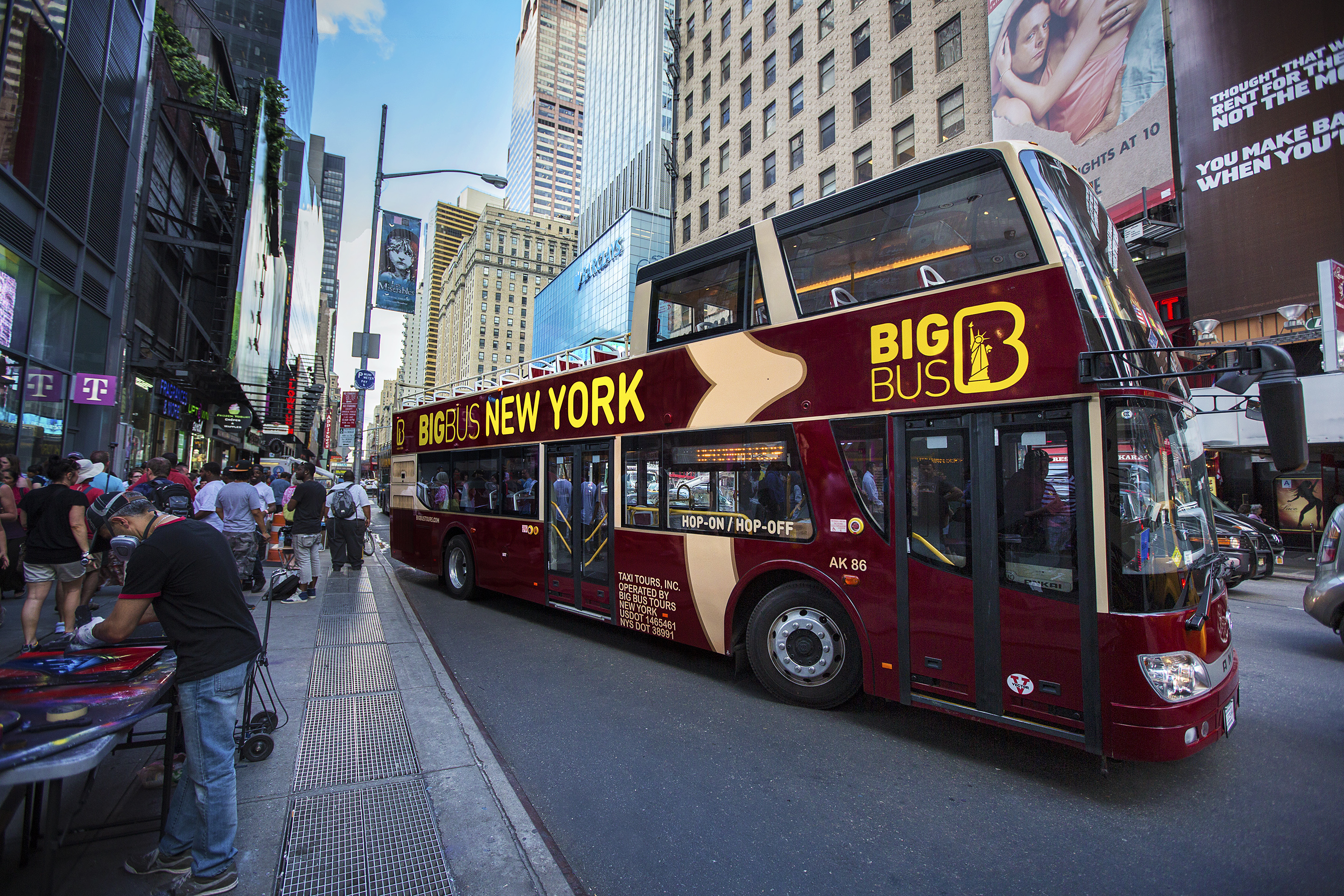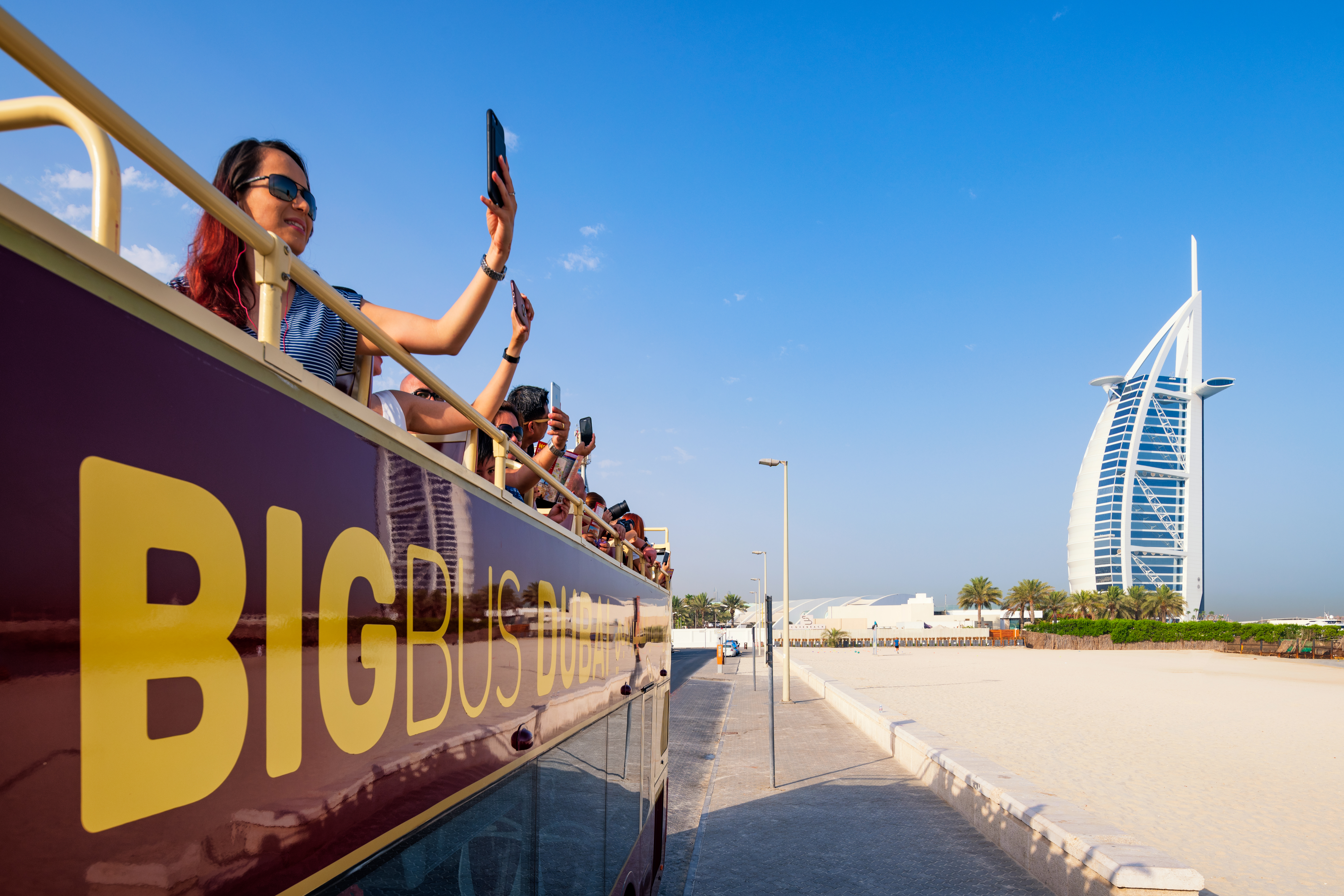
Tourism after Covid-19: An interview with Big Bus Tours
Covid-19 meant that demand for international tourism collapsed by 70% in 2020, back to the level of thirty years ago. As the world looks ahead to a post-pandemic future, we asked Louise Aldridge, Head of Digital Marketing at Big Bus Tours, how the business has risen to the challenges of the last twelve months and what the future holds for tourism.

Head of Digital Marketing
Louise, how would you summarise Big Bus Tours in three sentences?
Big Bus Tours is the leading operator of open-top sightseeing bus tours in the world. We’re present in 23 cities in 14 countries. Pre-pandemic, our fleet of hundreds of buses helped approximately 4 million tourists a year explore the great cities of the world.
Who are your customers and has Covid changed your customer profile?
The nature of our product means it’s a fairly broad audience – solo travellers, couples, families and groups of all ages. The mix of international versus domestic visitors varies by city. A key feature of our customer’s behaviour has been the short path to purchase – there’s a brief window of opportunity where we need to grab people’s attention.
Since the pandemic, we’ve moved to a predominantly domestic audience for all our cities, since international travel has drastically reduced. We have noticed our audience become younger – possibly because older travellers currently have lower confidence to explore, and possibly because fewer attractions are open in cities, which means we are now higher up the consideration list for younger customers. For example, our night tour in Las Vegas has become more popular since so many other things to do in the city were closed.
What kind of locations are good for bus tours?
Our brand vision is to be the number 1 thing to do in every world-famous city. So the kind of location which is right for us are the great cities of the world – exciting places where our customers can see iconic landmarks on every corner.
What was going well before Covid and what were your main challenges then?
The business was flying – most of our cities had recorded huge YoY growth for years, with 2019 the best year in our trading history. We launched Los Angeles and Berlin in 2019, with both cities doing incredibly well.
The nature of our business means we are used to grappling with challenges. Our locations are the world’s most prominent cities, so we have experienced political unrest such as the Hong Kong riots in 2019 and 2020, and terrorist attacks in London, Paris and elsewhere. We have also been subject to extreme weather events like the US deep freeze and Sydney bush fires, both in 2019.
The advantage of a global portfolio of cities is that poor performance or difficult trading conditions in one can be offset by good performance in another. That said, the varied nature of the cities is also our biggest challenge – every city is different, with its own competitor set, average order value, volume of available traffic, conversion rate and set of trading conditions. There is no one-size-fits-all in our business – every city has its own strategy.
How did you manage to lockdown the business?
Being a global company present in 14 different countries, the main challenge for us was responding to 14 different sets of government advice in each country. And in the US, where we are present in 7 states, each state had slightly different rules.
Our first priority was the safety of our customers and our staff. We treated it as we would any emergency: on hearing lockdowns were imminent, buses on tours were told to return to Stop One so customers could disembark. A member of staff remained at the bus stop to communicate with any customers who needed assistance while buses returned to their depots as quickly as possible. Because we had experience of scaling down rapidly in response to events such as the Hong Kong riots mentioned above, we have a template for how to do this safely. Effective communication between local teams, head office and our customers is always critical, and in this instance those cities that had already gone into lockdown were able to share valuable advice with the ones that followed.
The bigger challenge actually came in the following weeks from a HR and finance perspective. In the UK, we had the furlough scheme for example, but each country had differing arrangements, so we had to grapple with different laws and schemes across 14 different markets – a huge administrative challenge.
Did any city keep going?
Not during the first wave, no. Rome was the first city to lockdown on 10th March 2020, with Europe and then the US following suit. Within 10 days of Rome locking down, all 23 cities had shut. Since last July, 15 cities have re-opened, some of which have closed again in response to subsequent restrictions.
What sort of projects could you work on during lockdown?
Actually – a lot. Our business has grown dramatically every year, for many years. The scale of our growth was exciting but it also meant we operated at full steam, all the time. The lockdown gave us an unplanned opportunity to step back and think about our customer vision. For example, what do we want to offer customers in the new world? What needs to change about our business? How do we hit the ground running once a sense of normality returns?

We started working on new audio commentary which has already been rolled out on our London and New York tours. The commentaries had become out-of-date and lockdown provided an opportunity to revise them to be more reflective of the memorable and entertaining experience we offer our customers.
We also migrated our entire ticketing platform to a more robust system. This was something we had been considering before the pandemic but with ticket sales so high, it was difficult to find the right time to undertake such a large project without a risk to revenue. With the lull in sales, we were able to implement this much more quickly than if we had attempted to do so during a busy trading period.
In the short term, our focus was on switching from international to domestic customers. We also worked on safety measures and what messaging we could use to reassure customers – sanitisation and cleaning protocols, social distancing and so on.
How has the business coped with the stop/start nature of lockdowns?
The city teams are good at dialling up and down operations – they’ve had practice before in response to unforeseen events as well as seasonality. When it came to re-opening cities, it was essential to make sure the timing was absolutely right. It’s been baby steps each time – allowing operations to bed in before scaling up.
For those cities in Europe that re-opened and have since gone back into lockdown, they follow the same process from the first time round. Once again, effective communication between stakeholders remains crucial and from a digital marketing perspective, turning our PPC campaigns on and off at the appropriate moment was super-important to avoid wasting budget. Oban was very agile in assisting with this and providing the right strategic advice each time.
You mention the Hong Kong riots a couple of years ago – how does the business respond to challenges like that?
It’s about safety first and foremost. For example, following the Capitol riots in Washington on 6th January, we suspended the service immediately to minimise risk to customers and staff. We only resumed the tour on 28th January – a week after the inauguration. We contacted all employees and the union, closed our retail locations, and secured the physical offices. We adjusted our messaging across channels and contacted affected customers to offer ticket extensions or refunds.
However, there’s a key difference between a pandemic and an event like a riot or demonstration – throughout the pandemic, governments and health organisations have provided advice and guidance. With political unrest or terror events, they are obviously fast-moving situations with little to no guidance – you have to figure it out yourself in real time.
Has Covid-19 caused you to rethink any marketing activity which was a priority before?
The main difference has been switching our immediate focus from international tourists to domestic. This changes our targeting approach on paid media and some of the messaging we use. Clearly, reassurance is a big theme now for our marketing messages – with the emphasis on cleaning and sanitisation, and social distancing protocols etc – to reassure customers that the experience we offer is safe.
Our digital sales channels have seen strong growth in recent years and these will be even more critical in the future. In the short term, our approach to growth has changed – in the months ahead, it’s about recovering volume and ROI rather than being able to chase massive growth.
Have you adapted the product to a post-Covid world?
Yes. Before, we had open-ended tickets but some are now timed and dated so we can control volumes to ensure social distancing. When we first relaunched, routes were changed from hop on, hop off to panoramic (that is, a once round, non-stop tour), again to control passenger volumes and enable cleaning after each loop, although now we have a better understanding of demand, we’ve been able to re-introduce hop-on hop-off. We have more emphasis on contactless ticketing and ticket inclusions vary depending on what other attractions – such as the London river cruise – are available at the time.
How do you see the world opening up and over what time frame?

There’s still a lot of uncertainty – around vaccination programmes, vaccination passports, requirements for testing, travel corridors and quarantine restrictions. These things will shape the speed at which the world opens up and right now, it’s too early to say. We are expecting 2021 to be similar to 2020, although domestic demand in each city is likely to be greater this year. We think 2022 will be when international travel really starts to return – and when it does, it will come back quickly. There is pent-up demand – people want to explore the world again.
Are there any new markets you want to expand into?
Yes. Our vision is to be present in every world-famous city. We are always looking at new opportunities, all over the world.
Where do you see future growth coming from?
We are seeing encouraging performance across our US cities which benefit from a strong domestic audience and we expect to see customers from Latin America making up a greater proportion of sales than before. However, with Europe still suffering from high case rates, cities like Paris and Rome – previously amongst our most popular – are still dormant.
Asia has good potential – this was true before Covid and even more so now, given that they have recovered from the pandemic faster than in Europe and the US. Right now, our Singapore operation is performing really well and this is largely because the government there has a fantastic incentive scheme called SingapoRediscovers – to encourage local residents to explore local attractions and get things opening up again. It’s possible that other governments may adopt a similar scheme to Singapore’s, which will help drive local tourism.
Longer term, we are confident that global travel will come back in a big way. And when it does, Big Bus will be ready.
. . .
Oban’s work with Big Bus Tours has won Best Digital Marketing Campaign and Best Use of Search Marketing at the UK’s prestigious Travolution Awards. To find out how we can deliver award-winning international growth for your business, please get in touch.

Suzie Oakford | Commercial Director
Oban International is the digital marketing agency specialising in international expansion. Our LIME (Local In-Market Expert) Network provides up to date cultural input and insights from over 80 markets around the world, helping clients realise the best marketing opportunities and avoid the costliest mistakes.